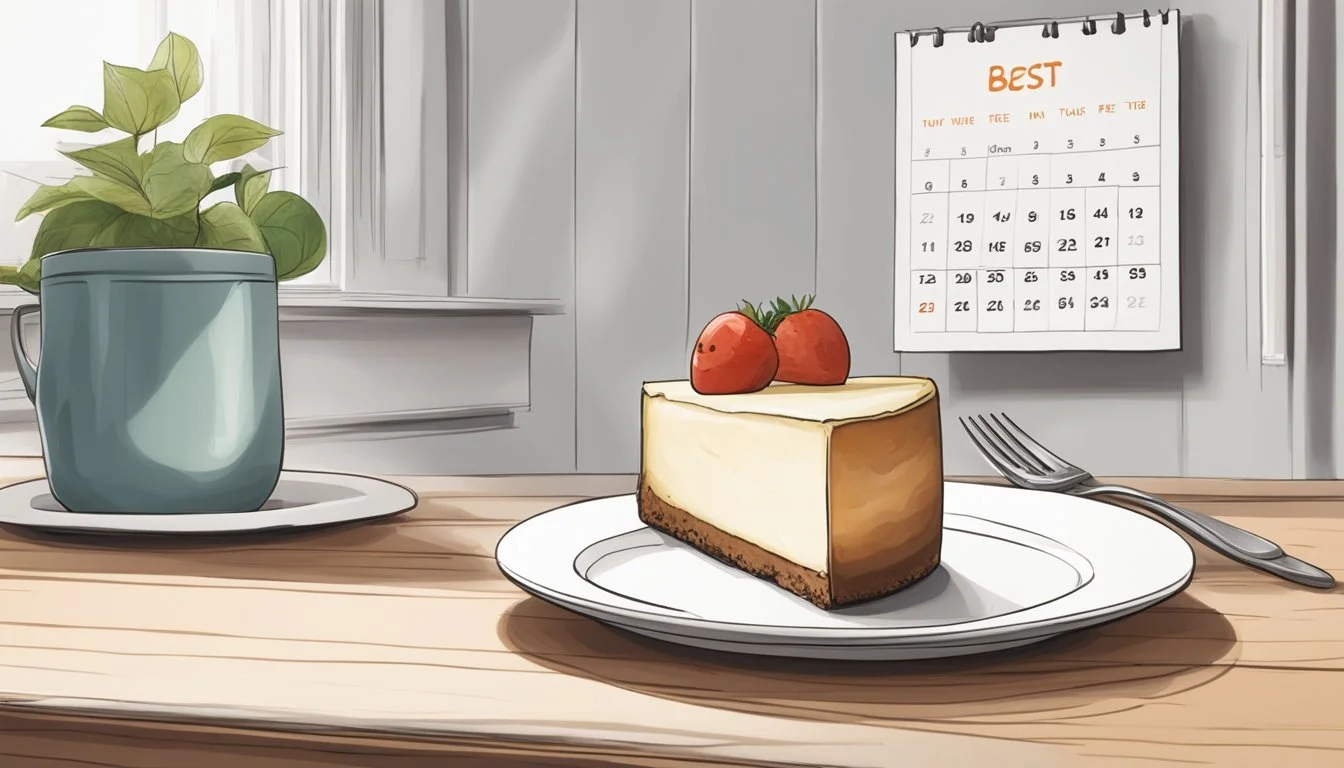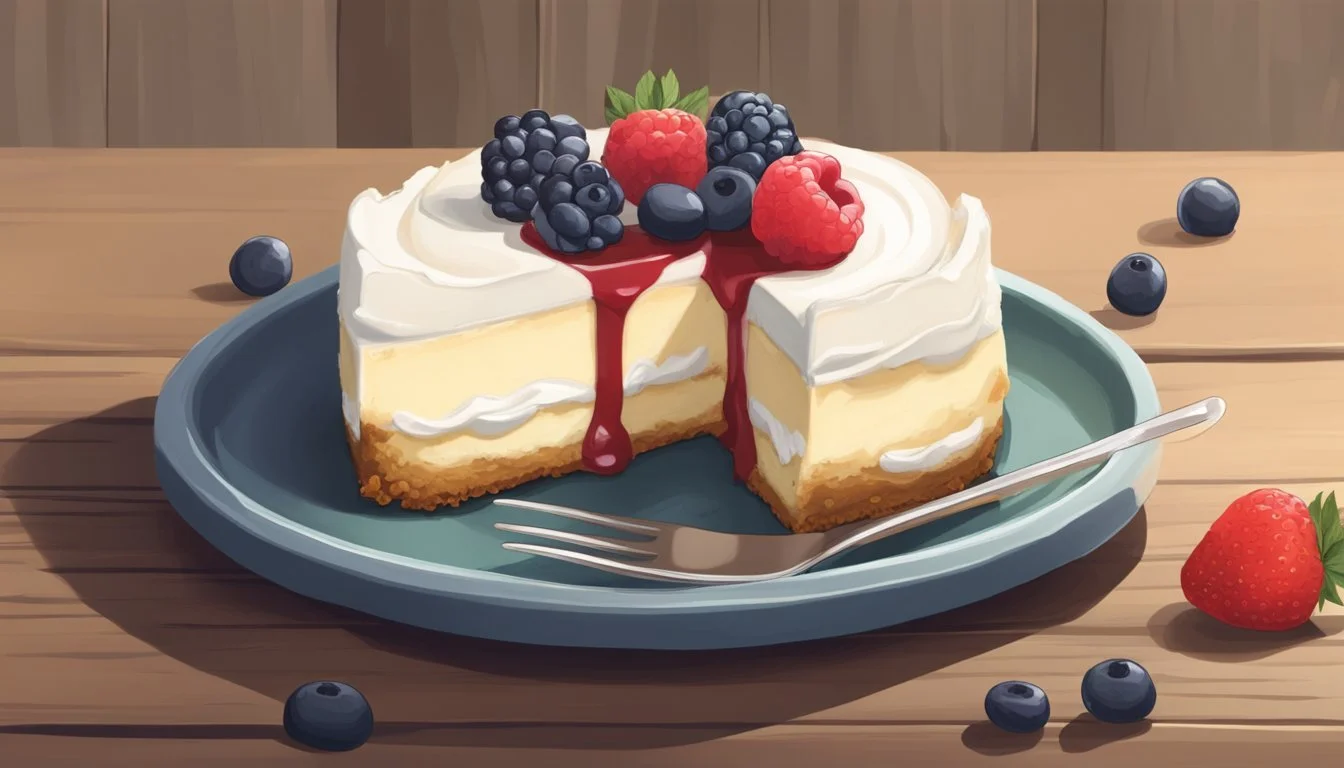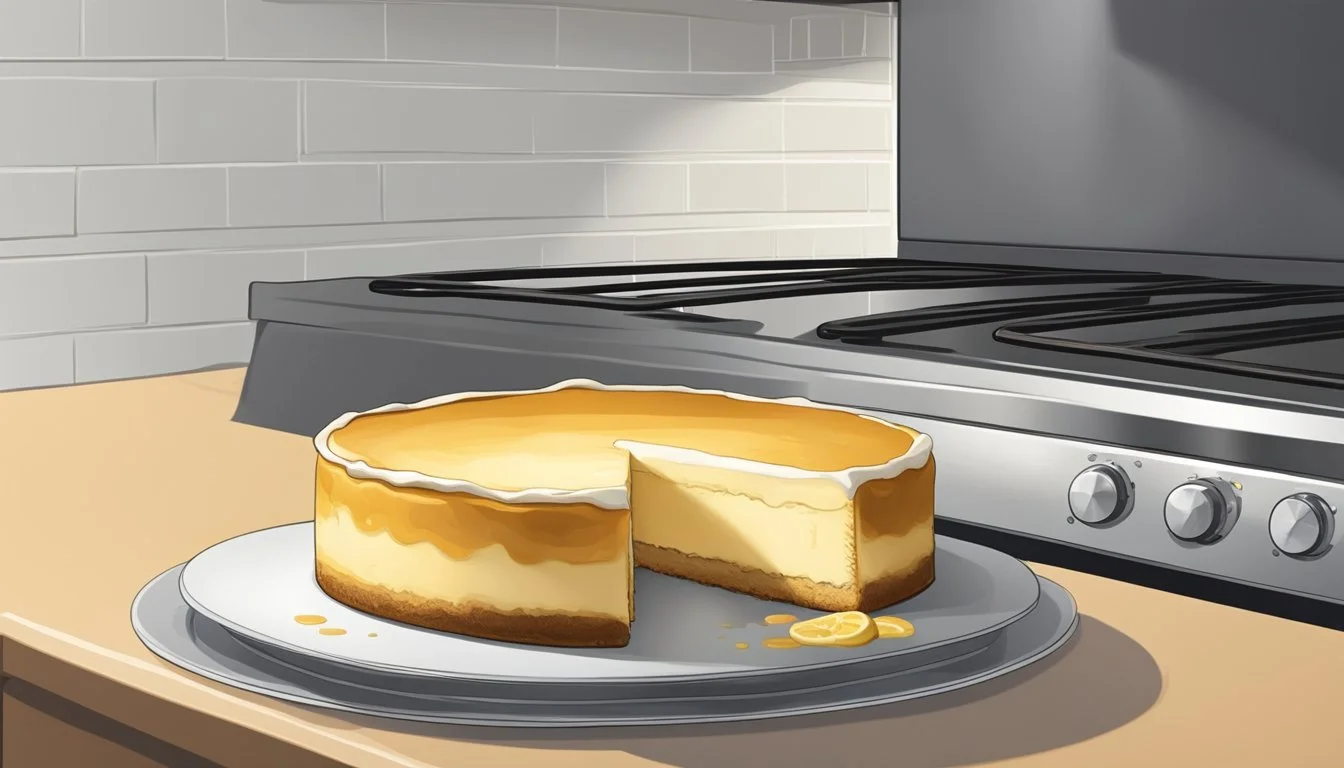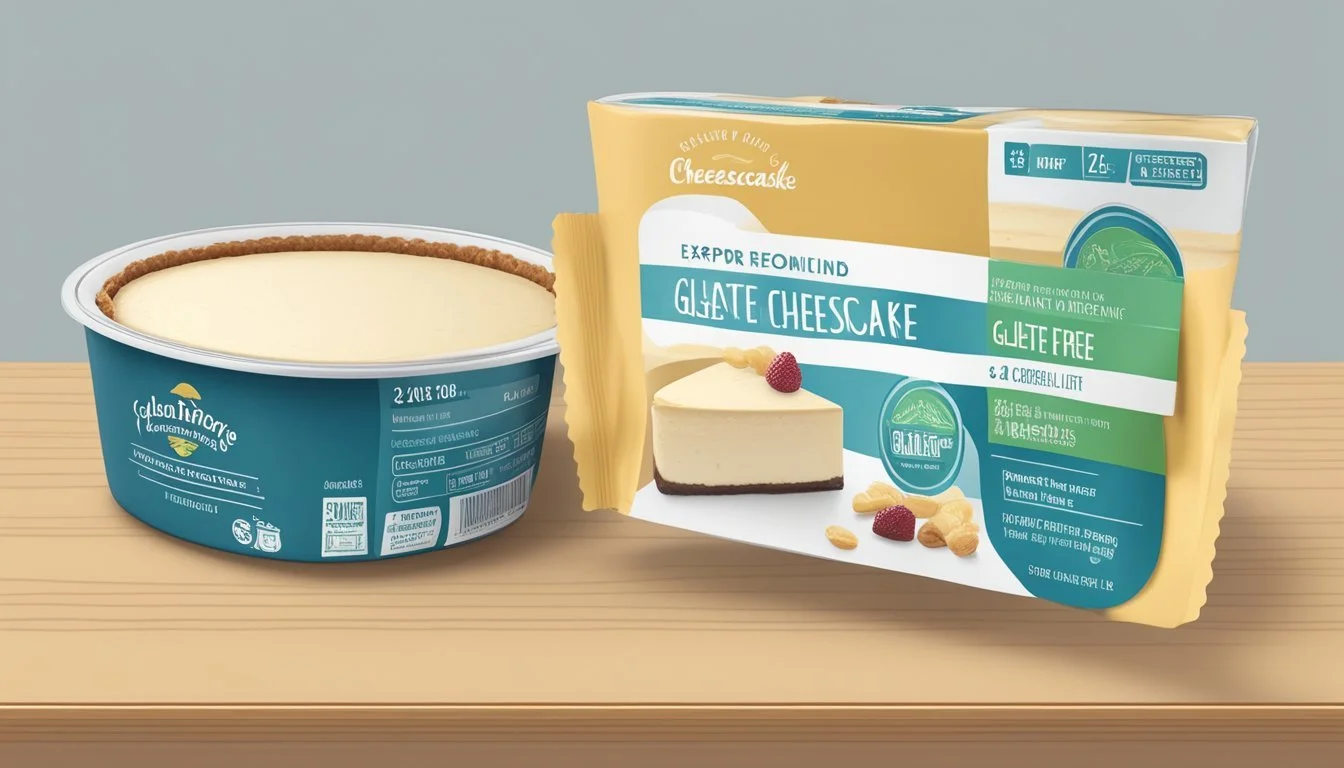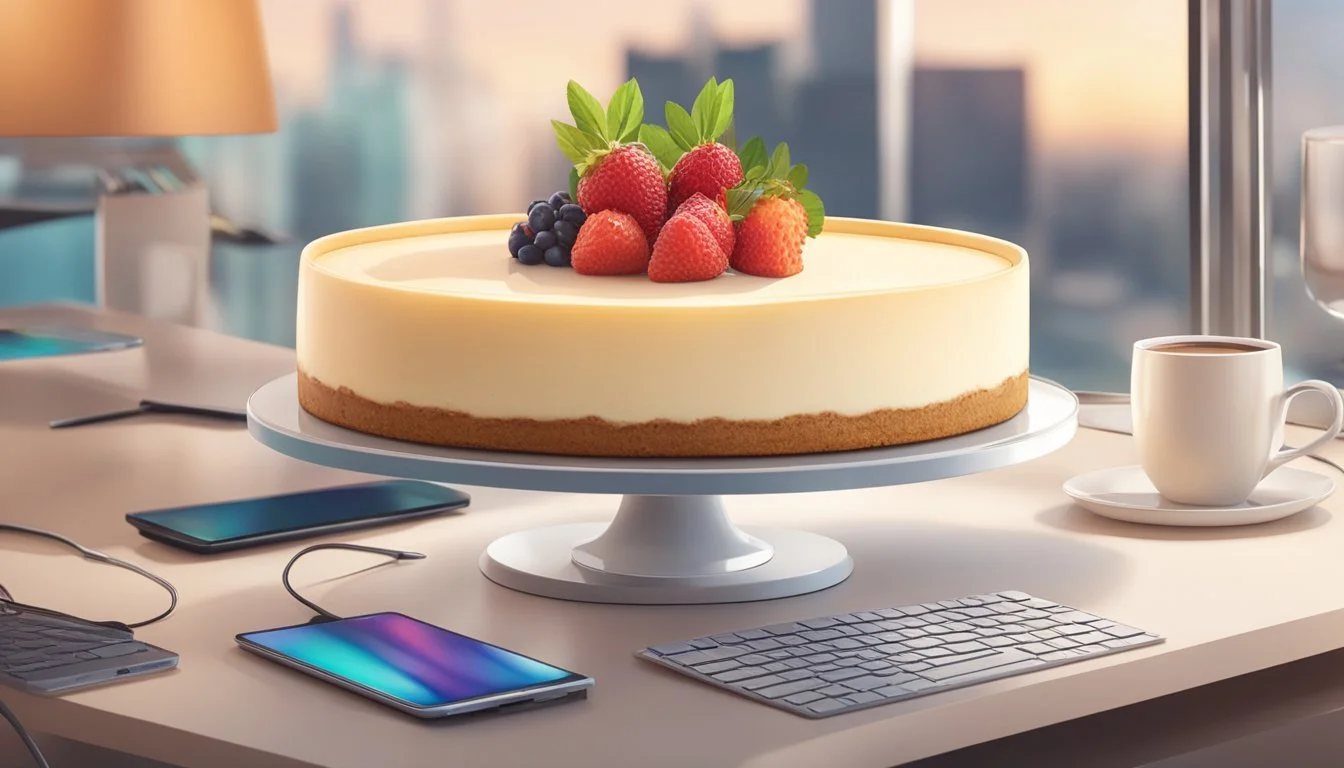How Long Does Gluten-Free Cheesecake Last?
Storage Tips and Shelf Life Explained
Curious about how long your gluten-free cheesecake will last? It's a common question for those who enjoy this delicious dessert but want to ensure they savor it safely. Storing your cheesecake properly is key to extending its shelf life.
In the refrigerator, a gluten-free cheesecake can generally last up to 5-7 days. For optimal freshness, always store it in an airtight container. This prevents the cheesecake from absorbing any unwanted odors or moisture from other foods.
If you need your cheesecake to last longer, freezing is an excellent option. A properly stored cheesecake in the freezer can maintain its quality for up to 1-2 months. To freeze, wrap the cheesecake tightly in plastic wrap and then aluminum foil, or place it in a freezer-safe container. This ensures it retains its creamy texture and delicious flavor.
Understanding Gluten-Free Cheesecake
Gluten-free cheesecake is a delicious dessert that caters to those who are sensitive to gluten.
Cheesecakes are traditionally made with a graham cracker crust. In gluten-free versions, gluten-free graham crackers are used instead.
The main filling ingredients, cream cheese, sugar, and eggs, remain the same in gluten-free cheesecakes. No gluten-containing ingredients are involved.
Different recipes suggest various preparations. Common steps include preheating the oven, preparing the crust by mixing gluten-free graham cracker crumbs, melted butter, and sugar, and blending the filling ingredients.
Some gluten-free cheesecakes require baking at temperatures around 325°F to 350°F. An alternative is no-bake gluten-free cheesecake, allowing ingredients to set in the refrigerator.
Storage: Gluten-free cheesecakes should be stored in the refrigerator. They often last 3-5 days when properly covered. Freezing is also an option, which can extend their shelf life up to several months.
Ingredients can vary slightly. Some recipes include additional flavors like cinnamon in the crust or lemon zest in the filling.
Various brands offer pre-made gluten-free graham crackers, making the preparation easier.
The gluten-free dessert maintains the creamy and rich texture characteristic of cheesecakes.
Key considerations include ensuring all ingredients are certified gluten-free to avoid cross-contamination and verifying that utensils and baking tools are also gluten-free friendly.
Whether baked or no-bake, gluten-free cheesecake remains a favorite for many, offering a delightful treat for those avoiding gluten.
Essential Ingredients
Creating a gluten-free cheesecake involves choosing the right gluten-free ingredients and combining them perfectly for a tasty and safe treat. Key areas to focus on include the base components and the filling.
Base Components
For the base of a gluten-free cheesecake, gluten-free graham crackers are essential. These crackers provide the traditional crunchy texture without gluten. Crush them finely for the best result.
Butter is vital for binding the crumbs and adding a rich flavor. Melt the butter and mix it thoroughly with the crushed gluten-free graham crackers. Powdered sugar can be added to sweeten the base and ensure it holds together well.
Table of base components:
Ingredient Quantity Gluten-free Graham Crackers 1 1/2 cups (crushed) Butter 6 tablespoons (melted) Powdered Sugar 1/4 cup
Making the Filling
The filling blends creamy and flavorful ingredients for the signature taste and texture of the cheesecake. Cream cheese is the star component, providing a smooth, creamy base. Use a high-quality, full-fat cream cheese for the best results.
To sweeten the filling, sugar is mixed in. Depending on personal preference, powdered sugar or granulated sugar can be used. Eggs are crucial as they help in setting the cheesecake, giving it structure and richness.
Ingredients for the filling:
Cream cheese: 24 ounces (softened)
Sugar: 1 cup
Sour cream: 1 cup, for tangy richness
Vanilla extract: 1 teaspoon, for flavor
Eggs: 3 large, incorporated one at a time
Combining these ingredients with a gentle touch ensures a well-mixed, lump-free filling. The vanilla extract and sour cream add depth of flavor and a slight tang.
This careful combination and attention to detail in the ingredient selection and mixing process are what make the gluten-free cheesecake both delicious and safe for those avoiding gluten.
Preparing the Perfect Crust
Creating the perfect gluten-free cheesecake crust requires careful selection of ingredients and methods. This section provides clear guidance on choosing appropriate materials and methods for forming the crust to ensure optimal texture and flavor.
Choosing the Right Materials
To make a successful gluten-free cheesecake crust, start with gluten-free graham crackers. Ensure the crackers are finely crushed to create a uniform base. A food processor works best for achieving this consistency.
For binding, mix the crushed graham crackers with melted butter. This combination holds the crust together while baking. Some recipes might call for additional ingredients like sugar for sweetness or cinnamon for flavor, but these are optional based on preference.
Use a 9-inch springform pan for the cheesecake. Line the bottom with parchment paper to prevent sticking. Thorough greasing of the pan with butter or cooking spray is also recommended.
Crust Forming Techniques
After preparing the graham cracker mixture, pour it into the springform pan. Use a rolling pin or a flat-bottomed glass to press the crumbs firmly and evenly across the bottom and slightly up the sides.
Ensure an even thickness to avoid uneven baking. The crust should be compacted enough to hold together but not packed too tightly, as this can result in a dense texture.
Pre-baking the crust for about 10 minutes at 350°F helps in setting it properly. This step prevents the crust from becoming soggy when the cheesecake filling is added. Once out of the oven, let the crust cool completely on a rack before proceeding with the filling.
These techniques ensure a sturdy, flavorful base for the gluten-free cheesecake. Proper preparation of the crust is essential for achieving the best results in texture and taste.
Cheesecake Baking Process
Creating a perfect gluten-free cheesecake involves attention to detail at various stages, from mixing the ingredients to baking and avoiding common issues such as cracks. Each step can greatly influence the texture and final outcome.
Mixing and Baking
Begin by preparing the crust. Crush gluten-free graham crackers using a food processor until fine. Mix these crumbs with melted butter and sugar in a mixing bowl until well-combined.
Preheat the oven to 325°F or 350°F, depending on the recipe specifics.
Use a springform pan for best results, greased and lined with parchment paper.
Ensure the cream cheese is at room temperature for easier mixing. Combine it with sugar, eggs, and other ingredients at medium-low speed until smooth.
Pour the mixture over the prepared crust.
Place the pan on the oven's center rack.
Bake until the top is set but the center jiggles slightly when shaken.
Avoiding Cracks and Common Issues
To prevent cracks, avoid overmixing the batter as this can incorporate too much air.
Use a water bath to create a moist baking environment. Wrap the springform pan in aluminum foil and place it in a larger pan filled with hot water.
Bake slowly at a lower temperature to prevent the cheesecake from puffing up and collapsing.
After baking, allow the cheesecake to cool gradually, first in the oven with the door cracked open, then at room temperature.
Refrigerate the cheesecake for several hours, preferably overnight, before serving.
Cracks often occur due to rapid temperature changes, so gradual cooling is essential.
These steps ensure a smooth, creamy texture and reduce the risk of cracks.
Storage and Shelf Life
Gluten-free cheesecake can last several days when stored properly. Correct refrigeration and freezing practices extend its freshness and shelf life.
Refrigeration Best Practices
To maximize the shelf life, keep gluten-free cheesecake refrigerated at all times. Store it in an airtight container or wrap it well with plastic wrap to prevent it from absorbing other odors. Typically, a gluten-free cheesecake will remain fresh for 4-7 days in the refrigerator. Store-bought cheesecakes usually have preservatives which may help them last longer within this timeframe.
Maintaining the cheesecake at a constant refrigerated temperature is essential. Fluctuations can affect its texture and safety. Be mindful of common refrigeration zones and avoid placing the cheesecake near items with strong odors, like onions or garlic, to maintain its purity.
Freezing and Long-Term Storage
For extended storage, freezing gluten-free cheesecake is effective. Make sure the cheesecake is well-wrapped in plastic wrap and then placed in airtight containers or freezer-safe bags. This method prevents freezer burn and maintains flavor. A frozen gluten-free cheesecake can last 1-3 months in the freezer without significant quality loss.
Before freezing, consider portioning the cheesecake to avoid thawing more than needed. To enjoy later, thaw slices in the refrigerator overnight. Avoid using a microwave for thawing, as it can alter the texture and taste. Proper portioning and thawing guarantee a balanced experience of the cheesecake’s calories, fat, carbohydrates, and other nutrients like protein and sodium in every slice.
Taste and Decoration
Taste and decoration play crucial roles in making a gluten-free cheesecake not only delicious but also visually appealing. Proper selection of toppings and thoughtful presentation can enhance both the flavor and aesthetic of the cheesecake.
Choosing Toppings and Add-ons
Selecting the right toppings can transform a simple gluten-free cheesecake into an extraordinary dessert. Fresh berries like strawberries, raspberries, and blueberries provide natural sweetness and color. Caramel sauce and chocolate sauce add richness, while whipped cream offers a light, fluffy touch.
Crushed gluten-free cookies or granulated sugar can be sprinkled on top for an added crunch. Fresh fruit such as sliced kiwi or bananas can also work well, providing both texture and visual flair. Ensuring that all these toppings are gluten-free is essential to maintaining the integrity of the dessert.
Presentation and Serving Ideas
Presentation is key when serving gluten-free cheesecake. Simple garnishes like a dusting of powdered sugar can add elegance. Fresh berries or mint leaves can be placed strategically to enhance visual appeal. Drizzling caramel or chocolate sauce over each slice before serving can create a gourmet look.
For special occasions, using a whipped topping to create decorative swirls or borders around the cake can be particularly striking. Serving the cheesecake on a beautiful platter with complementary plates and utensils can also make a significant impact. Attention to detail in presentation elevates the entire dessert experience.
No-Bake Cheesecake Variations
No-bake cheesecakes offer a versatile dessert option that allows for creativity in both flavor and texture. Varying the mixing and chilling steps, as well as adjusting texture and consistency, transforms this classic treat.
Mixing and Chilling Steps
First, it's essential to use softened cream cheese to ensure a smooth and creamy mixture. Mixing the cream cheese with a hand mixer or stand mixer helps achieve a light and fluffy texture. Adding heavy cream enhances the richness of the filling. For a smoother mix, combine the cream cheese, confectioners' sugar, and vanilla bean paste in a large bowl.
For mini cheesecake bites or a traditional pie filling, meticulous chilling is crucial. The mixture typically needs several hours of chilling, ideally overnight. This process allows the cheesecake to set and attain the perfect consistency. Using gelatin or corn syrup can further stabilize the cheesecake without baking.
Texture and Consistency Adjustments
Adjusting the texture and consistency of a no-bake cheesecake changes its overall mouthfeel. Incorporating whipped heavy cream into the mixture adds lightness. For a denser texture, reduce the amount of whipped cream and increase the cream cheese ratio.
Substitutions also play a role. Using Neufchatel cheese instead of regular cream cheese can produce a slightly tangier and less rich cheesecake. For a unique flavor twist, adding cinnamon or substituting vanilla extract with vanilla bean paste can create a richer taste profile. These adjustments allow the creation of a personalized dessert suited to individual preferences.
Health and Dietary Considerations
Gluten-free cheesecake can be a delicious yet nutritious option, especially when specific dietary adjustments are made. Attention to nutritional alternatives and smart substitutions can create a dessert that caters to various health needs without sacrificing flavor.
Incorporating Nutritional Alternatives
Using gluten-free ingredients is essential for a gluten-free cheesecake. To enhance nutritional value, alternative ingredients such as almond flour or coconut flour can be used instead of traditional gluten-free graham crackers for the crust. These alternatives are rich in protein and healthy fats, which can improve the cake's overall nutritional profile.
Including fresh fruits like berries, or adding a nut-based crust, increases fiber intake and adds antioxidants, beneficial for health. Greek yogurt can be substituted for sour cream, adding extra protein while reducing cholesterol levels.
Allergy-Friendly Substitution Tips
When catering to various allergies, it's crucial to replace common allergens with safe alternatives. For instance, using dairy-free cream cheese and coconut milk instead of traditional dairy products can help those with lactose intolerance. Replacing eggs with chia seeds or flaxseed meal mixed with water offers a vegan-friendly binding agent.
Consider using natural sweeteners like honey or maple syrup instead of processed sugar to reduce carbohydrate content and make the cheesecake more suitable for individuals watching their glycemic index. Monitoring sodium levels by avoiding high-sodium ingredients can also make the dessert more heart-friendly.
Clear and practical dietary adjustments can make gluten-free cheesecake enjoyably inclusive without compromising on taste or texture.
Gluten-Free Cheesecake in Digital Culture
Gluten-free cheesecake has firmly established itself as a popular topic in digital culture. This includes a surge in both social media recipes and video tutorials.
Social Media Recipes and Trends
Instagram and Pinterest are significant platforms for sharing gluten-free cheesecake recipes. Users often showcase variations like New York-style cheesecake and pumpkin cheesecake.
Food bloggers and influencers post step-by-step photos and sometimes short video clips. Common ingredients featured in these posts include gluten-free graham crackers, almond flour, and vanilla extract.
Hashtags such as #glutenfreecheesecake make it easy for users to find inspiration and baking tips. Many posts also encourage the use of electric mixers or stand mixers to achieve a creamy texture.
Video Tutorials and Online Resources
YouTube offers extensive resources for making gluten-free cheesecake. Many content creators upload detailed video guides, from mixing with an electric mixer to using an Instant Pot for a no-bake version.
Channels often focus on recipes that avoid turning on the oven, catering to those looking for quick and easy methods. Videos also highlight specific techniques to ensure the cheesecake filling remains smooth and lump-free.
Online cooking platforms and blogs complement these videos with written recipes, ingredient lists, and tips. This combination of mediums ensures that users of all experience levels can successfully make gluten-free cheesecake at home.

